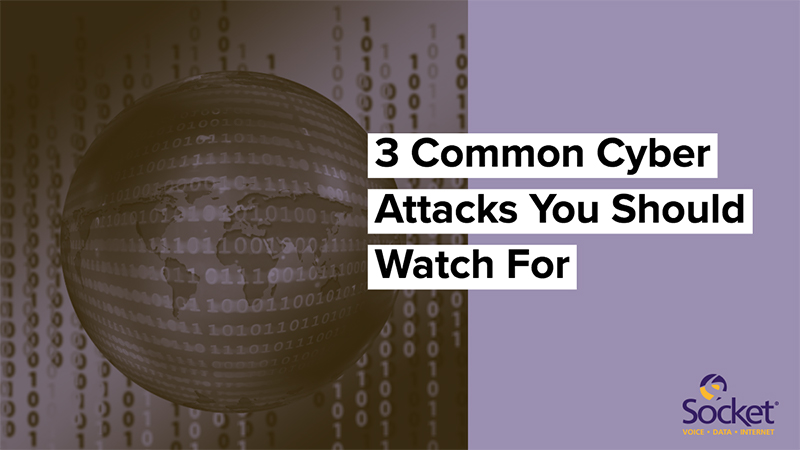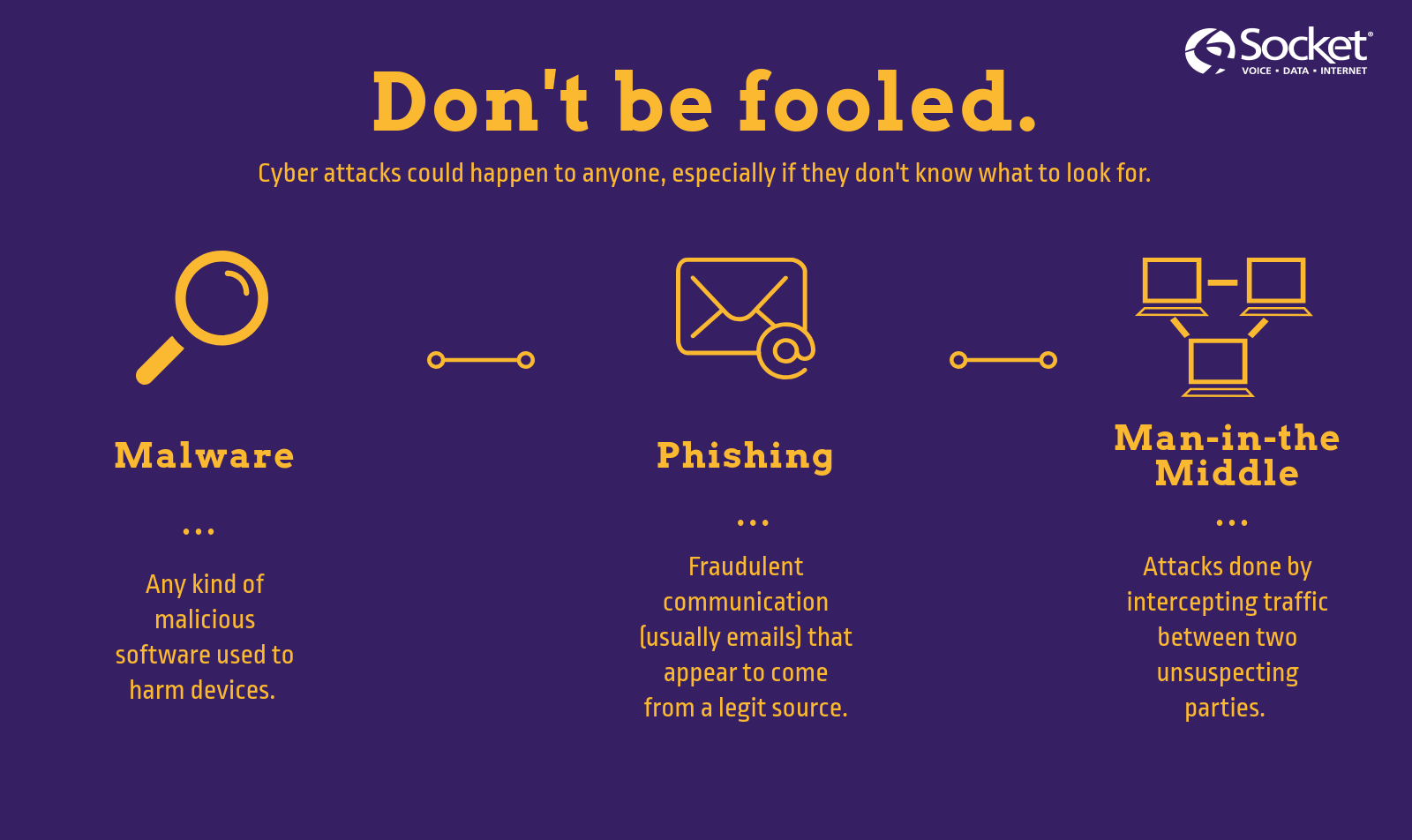
The internet is a great thing, but sometimes not so great things come from it. We all hear about cyber threats and attacks affecting millions of people, and it can be scary knowing that you’re not always safe online. Don’t worry, the news isn’t all bad. The best thing you can do to protect yourself is to stay informed. It’s important to know what kind of cyber attacks are out there in order to understand what to watch for.

Malware
Malware includes any kind of malicious software such as viruses and spyware, that are used to damage devices, steal data, and other acts that wreak havoc. They come in through a vulnerability in your network, and usually it’s an honest mistake on the user’s end. That could happen if you open an email attachment or click on a link. So it’s crucial that you always verify the source of something BEFORE clicking or downloading anything.
Malware can be anywhere. Emails. Websites. Apps. In fact, over 24,000 malicious apps are blocked from different app stores each day.
Once in your system, malware could do a multitude of damage.
-
Block access to important components of your network
-
Disrupt parts of a system to make it inoperable
-
Gather sensitive information about your internet activity, including monitoring keystrokes to steal passwords
-
Install additional harmful software
Phishing
If there’s one thing to remember, remember this: beware of the Phisher’s Net. It’s so easy to get caught in the scheme since it comes in the form of communication from a seemingly legitimate source (usually an email).
For example, there was a time when Socket customers receive emails that appeared to be from our webmail. It told customers that their account had been suspended, and they needed to click a link to reinstate it. Someone who doesn’t know what phishing is, might not have thought twice about the email and clicked the link.
That’s not good.
By clicking that link, you open yourself to credit card theft, network infiltration, and much more. It’s a tactic that has been around since the 1990s with no sign of stopping.
Just like when it comes to malware, practice caution when opening emails and clicking links. If anything, call the company it claims to come from just to verify. Emails should never ask for personal information.
Also, pay attention to what phishing emails could look like by researching examples.
Man-in-the-Middle
Man-in-the-Middle (MitM) attacks are just as they sound. Basically it’s an interference between two parties without those parties being aware. Also known as eavesdropping attacks, MitM attackers are able to interrupt traffic to gain whatever information they seek.
This happens in two common ways:
-
Through an unsecured public Wi-Fi connection
-
Through software that weakens your computer
With this type of attack, keep in mind the precautions when it comes to malware and phishing because MitM attackers could implement both. Here are a few tips to avoid these attacks:
-
Try not to connect to public Wi-Fi. If it’s something that you can easily access, so can cyber criminals. Instead look into using a Virtual Private Network (VPN) to safely browse the web without prying eyes.
-
Secure your home Wi-Fi. Makes sure you’re choosing the right encryption and creating a strong password.
-
Install some kind of internet security. Since a main tactic for MitM attacks involves malware, make sure you have something in place to fight against them.

